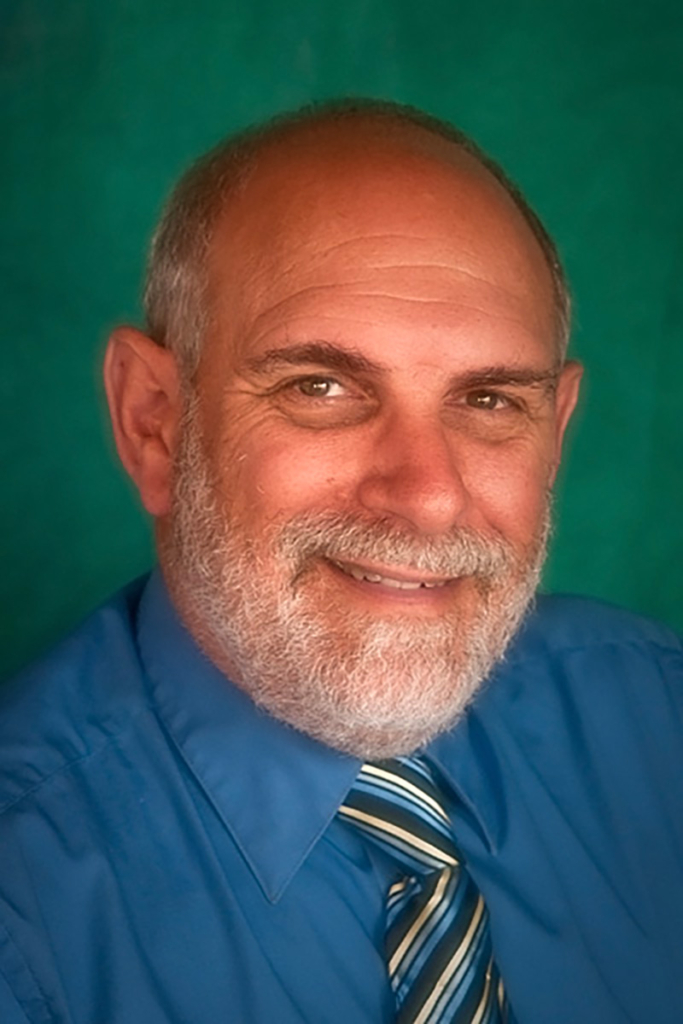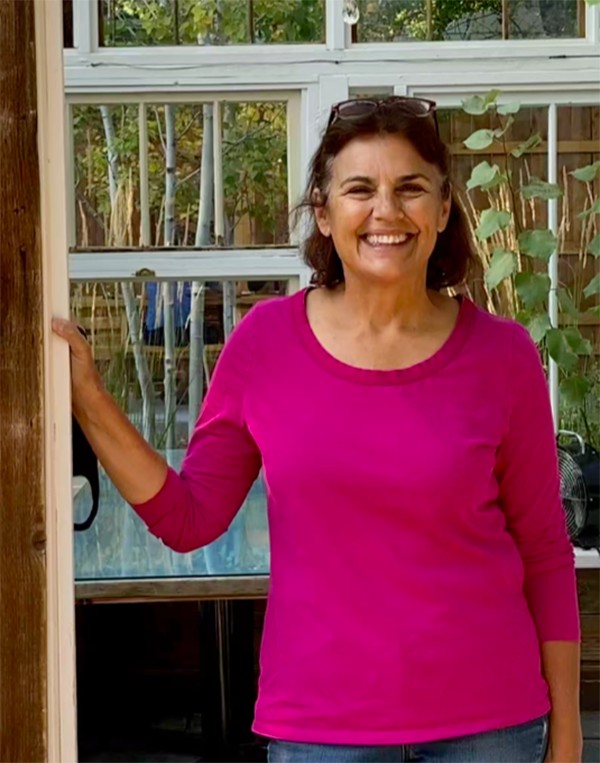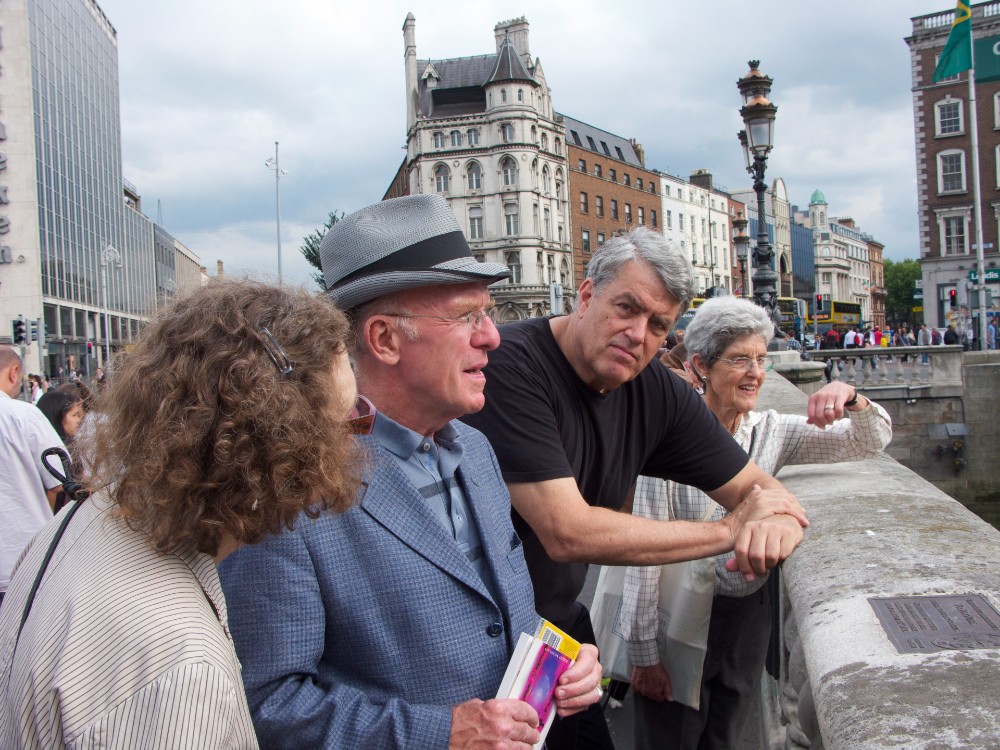At 83, Bill Chace is finally planning to retire.
Again.
The emeritus English professor from Stanford has served as president of both Wesleyan and Emory universities. After retiring from Emory, he returned to Palo Alto in 2010 and started leading Stanford alumni trips to England and Ireland, immersing adults in the literature and lore of various authors, including perhaps Chace’s favorite, James Joyce. He also returned to the classroom, and taught his course on Joyce’s daunting, century-old novel, “Ulysses,” via Stanford’s continuing studies program.
The main reason he’s calling the game is what he describes as a mild case of Parkinson’s disease. It brings on episodes of fatigue, and Chace (pictured above) is concerned he might be unable to withstand the rigors of lecturing and running travel-study tours.
His love for his craft, on the other hand, will be with him forever. As with many who have returned to work after thinking they had retired, it’s why he’s kept at it for more than half a century.
“I have found that people in classrooms at certain moments – I can see in their faces or in what they write that they’ve reached some new understanding, either of the material or of themselves,” Chace says. “People say, ‘Now I see it.’ Because I’ve been the handmaiden or the emcee of this, it gives me a real pleasure to have been in the presence of people who have these moments of greater understanding.”
Chace may have enjoyed his second career working with adults even more than teaching college students.
He perceives “a sharp distinction between teaching undergraduate and graduate students and teaching the people I’ve taught for the last decade or so in continuing studies. The people I’m teaching now are adults who have decided that for the purest of reasons – that is, they’re not looking for a grade or a letter of recommendation – they want to learn something about difficult and exciting topics.”
Filling a Need
Chace adds that he has continued to teach “to meet a demand that is heartfelt and ambitious.” When it comes to satisfying an important need, he is far from alone. Other once-retired people say they saw either opportunities or societal shortcomings that begged for their talents.
After more than two decades in finance, Kathy Jackson of Atherton had quit in 2004 to spend more time with her family. She got involved with Menlo-Atherton High School’s foundation, and one day a headhunter called to ask if she wanted the top job at Second Harvest of Silicon Valley, the food bank that serves San Mateo and Santa Clara counties. She stayed from 2009 to 2017.
—
This story appeared in the June edition of Climate Magazine.
—
Jackson calls it “the hardest job I’ve ever had, by a longshot. You’re trying to solve some of the most difficult issues in the world. I mean, hunger in Silicon Valley – how is it possible? And yet, you are trying to do it with, relatively speaking, limited resources.”
Beyond the satisfaction of helping people, Jackson says, “It was just so endlessly interesting.” Drawing on her MBA from Northwestern University’s Kellogg School of Management, she viewed running a food bank as a complex economics problem.
“Across every element of that organization and that operation, how do you optimize it so you can have the most impact with whatever resources you have?” she asks. “You just want to make sure every dollar you have is going absolutely as far as it can. And it just seemed like there were endless twists and turns to that challenge.”
Jackson lightheartedly – but also a little seriously – calls her time at Second Harvest her “repentance career.” As she notes, financial institutions during the Great Recession “did not cover themselves with glory.” She also observes that she seems to have “a bit of a seven-year-itch issue,” having stayed in all her paid positions for approximately that time. Since leaving the food bank, she has co-founded another nonprofit, served on the boards of two private companies, and, starting in October, will officially join the board of trustees of Menlo College in Atherton.
Fighting Ennui
Indeed, tedium may drive many who jump (or at least ease) back into the workforce. In a 2004 article in the Harvard Business Review, three researchers asserted, “Most people don’t want a life of pure leisure; half of today’s retirees say they’re bored and restless.” In a jab at employers, they added, “Most baby boomers want to continue working – and they may need to, for financial reasons – but they may not want to work for you.”
The opportunity to work on one’s own terms, especially for an inspiring cause, motivates many people who regularly volunteer after retiring. Sensing she was misusing her abilities – and also weary of both sexual harassment and underqualified colleagues who showed up high – Mary Burns left her advertising career in San Francisco, first to teach fifth grade and later to homeschool her own two children. Today, she spends up to 15 hours a week at Samaritan House, a nonprofit poverty-relief organization in San Mateo, managing its program that distributes clothes to needy kids.
“Volunteering is 100% different (from working in a paid job),” Burns says. “I control my time, I’m treated very well, and I’m appreciated.”
Giving Back
Now 60, Burns echoes Jackson’s dismay about poverty surrounded by plenty in the nation’s second-wealthiest county. (According to the U.S. Census Bureau, only earnings in Loudoun County, Virginia – home to antebellum mansions including one that belonged to President James Monroe – exceed San Mateo County’s $138,500 median household income.) For Burns, that has led to a feeling of obligation; she’s white and middle class, her husband owns a manufacturing business in South San Francisco and she finds herself compelled to give back.
“I know how privileged I am and how fortunate I’ve been,” she says. “I don’t know what else I would do if I weren’t trying to spread it around a little bit… It would feel really weird if I weren’t doing something, because there’s just no way that I could do enough to make up for the privileges I have.”
Also at Samaritan House, retired retail merchandiser, tech-industry recruiter and executive coach Patty Hsiu brought her managerial skills to two terms on the board of directors, including five-plus years as president starting while she was still employed. These days, she chairs the organization’s advisory council, made up of past presidents who together hold a wealth of institutional knowledge. That said, she gains tremendous rewards from working one morning each week packing up to 1,000 meals for Samaritan House’s clients.

“It’s one of the most satisfying things I do all week,” Hsiu says. “It feels like a job well-done.”
Creating an Impact
With that in mind, Hsiu says she has volunteered for 15 years at Samaritan House because she considers it consistently effective.
“When you think about poverty in the community, and you think about people needing things, Samaritan House does more from my point of view than anyone else in just helping people,” she says. (Jackson might respectfully disagree.) “Samaritan House helps them get the basics of food, shelter and security. You can’t get people educated, you can’t get people jobs, you can’t get people to a different place in their lives without getting them food, shelter and security. And medical care.”
Providing healthcare is where Jerry Saliman and Rod Hentz come in. Saliman, an internist, practiced at Kaiser Permanente for more than three decades in a broad-ranging career that included sports medicine, health and wellness, working in Kaiser’s spine clinic and overseeing patient education.
Hentz, meanwhile, has been a physician for more than 50 years; for 40 of them, he taught orthopedic surgery at the Stanford University School of Medicine and was chief of both hand surgery and plastic surgery at the Stanford University Medical Center (now Stanford Health Care). After retiring from his main duties in 2015, he has worked one or two days a week assisting with surgeries and providing on-the-job training to interns and residents at the Veterans Administration’s medical center in Palo Alto.
Fulfilling Volunteer Work
Saliman, 70, began volunteering in the free clinic at Samaritan House six years before he left Kaiser in 2012, anticipating that “when I retired, I didn’t want to give up my medical thinking and skills.” He’s done more than that; during his time at the clinic, he’s begun supervising nurse practitioners working there as part of their training at UC-San Francisco. On June 1, he became a volunteer clinical professor in the department of community health systems within the UCSF School of Nursing.

“It allows me to make a difference in people’s lives and make a difference in my own life,” Saliman says of his commitment to the clinic. “I feel fulfilled. I feel I’m helping my students learn and helping my patients get better.”
The 79-year-old Hentz stays with it for two reasons. First, he says, medicine is “a career where you feel some relevance. You’re taking care of people.” Second, continuing to teach future surgeons creates “psychic energy from passing on your knowledge to somebody who wants it.”
Hentz laughs that his primary role at the veterans’ hospital is to reassure patients that the younger doctors know what they’re doing. (“I have the gray hair,” he observes.) But it’s only partly in jest. Like many with long experience, Hentz possesses a treasure chest of historical insight.
“I know what’s been done,” he says. “I can relate to new things, and say, ‘I think this is a big improvement over how I used to do it.’ Or I can say, ‘This is not an improvement. It’s just different.’”
More to Do
Bruce Cumming, who retired as Menlo Park’s police chief in 1999 after nearly 30 years in law enforcement, simply believed he had more to give, both to the profession and the public. Just two years after he pinned on his badge for what he thought was the last time, he accepted an 18-month job as interim chief in Fort Bragg, on California’s north coast. Then, still in his fifties, in 2004 he took another presumed short-term position, in Morgan Hill. He stayed almost six years.
“I think it sounds a bit corny, but it’s a calling,” Cumming says. “Most officers get into police work because they want to help people. You feel like you’re helping our society and helping our democracy and making the world a little better.”
In Morgan Hill, Cumming says, the police department needed better training, upgraded procedures and especially more respect for support people such as administrative staff. When he departed in 2010, he felt a sense of mission accomplished.

“I enjoyed every minute,” he recalls.
Whereas Cumming missed his old job, Alan Sarver of Belmont planned all along for something new. Originally an elementary school teacher, he gravitated to software engineering to support his wife, Emily, and their two daughters, Ariel and Hannah. He rose to become director of product management at Oracle Corp., and through careful investing, in 2002 met his goal of retiring at 50. His aspirations were twofold: To spend more time with family and become more active in the community.
Throughout his corporate career, Sarver never lost his interest in education. (The decision to leave teaching, he says, was strictly economic.) Emily became a PTA leader, and the girls were active in school band and other activities. A year after retiring, Alan joined Emily as co-chair of the Ralston Middle School Music Boosters, and, later, the identically named organization at Carlmont High School. By 2009, Alan was on the Sequoia Union High School District Board of Trustees, from which he anticipates a second retirement this December.
Going back to school, as it were, felt almost like fate.
“As much as I enjoyed the software development career, my sense of being involved in the education community was, ‘Gee, it’s great to be back,’” he says. Asked about his dedication, Sarver says, “More than anything, it’s just the fundamental sense that our children are the future of the human race. And our schools can never be good enough for our kids. It’s work we can never be done with. … You’re just amped up to keep doing more and helping (education) be better and better for them.”

Serendipity
Sometimes a post-retirement career results when someone is just in the right place at the right time. In 2018, Carol Marks, now 66, was happily finished with her job as a legislative aide and office manager for San Mateo County Supervisor Warren Slocum. By chance, she found herself seated one day at a benefit event next to Amy Buckmaster, president and CEO of Chamber San Mateo County. As their conversation evolved, Buckmaster offered Marks a part-time job as the business organization’s legislative analyst.
“I really loved doing that,” Marks says, adding that she especially enjoyed “rich” policy discussions with legislators and their staffs. After being laid off in 2020 during the Covid pandemic, she retired for good – sort of. She now sits on the board of her homeowners’ association, mentors a college student, hopes to travel and is learning to cook more than what she terms “short-order” meals.

As Sarver contemplates his own second retirement, he wonders if the whole idea might be a contradiction in terms.
“When you think about retirement, you probably need to recognize that you never really do get retired,” he says. “What you move away from is a lot of things being dictated by the people who pay you, and a lot more of it being dictated by your commitment to the things that you’re passionate about.”
Jackson says after her careers in finance and the food bank, “We made a lot of jokes about Kathy Jackson 3.0.” Still, she says, “As far as I’m concerned, retirement is just one more opportunity for reinvention. It’s like a new canvas to work on. I certainly hope there will be a Kathy Jackson 4.0 and 5.0. But so far, it’s been a great journey.”






